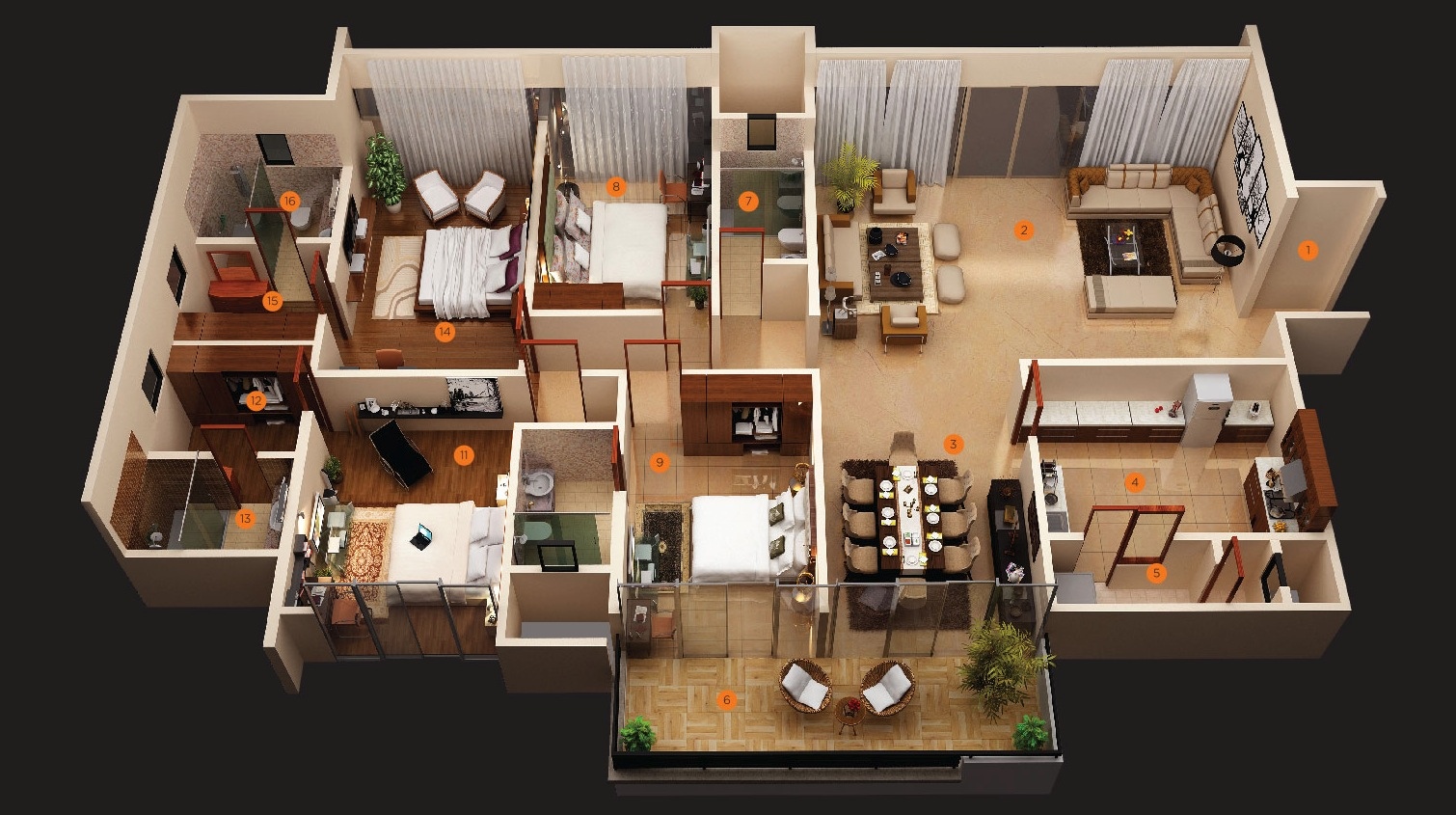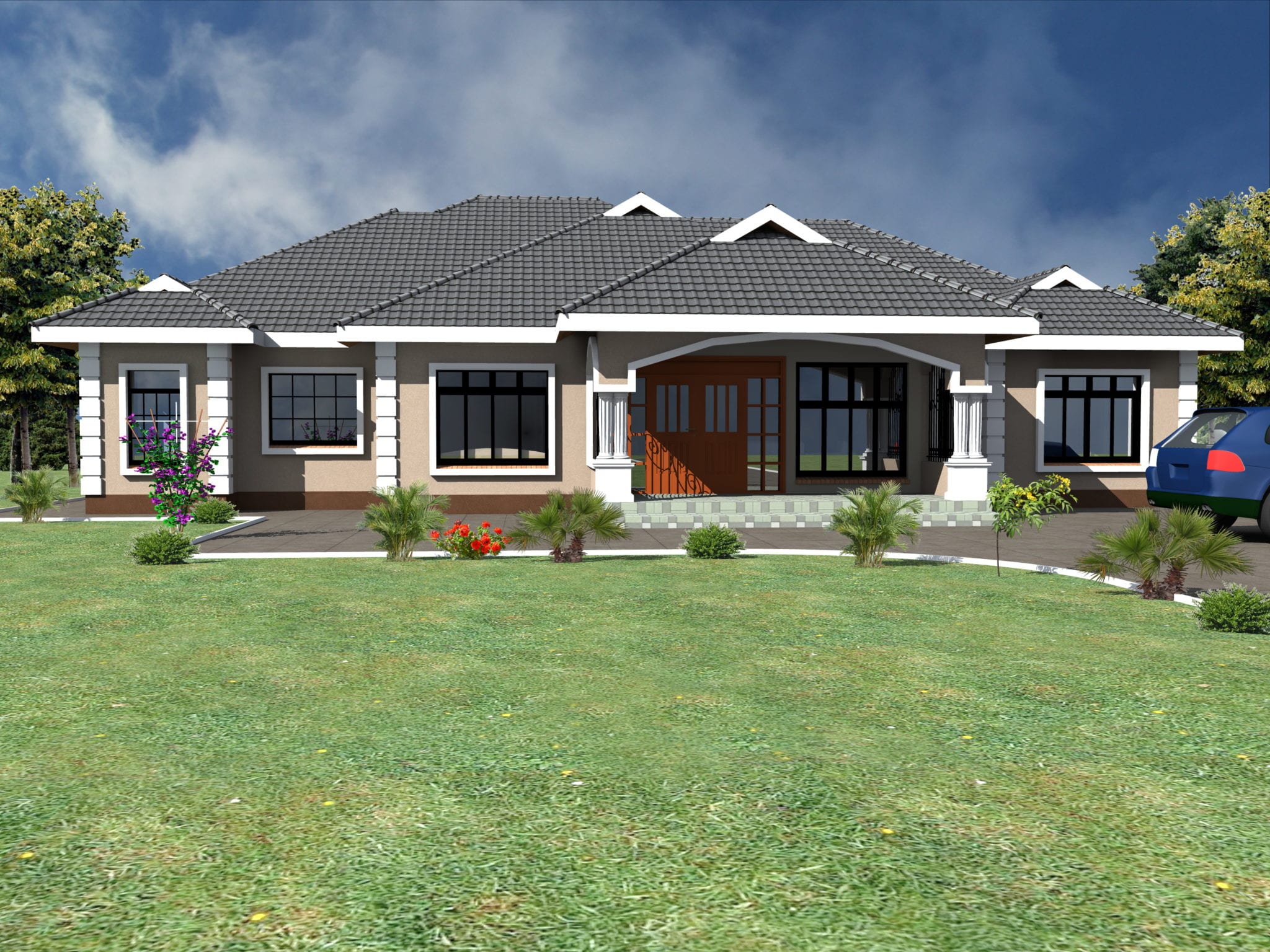Understanding 4 Bedroom 2.5 Bath House Plans

The 4 bedroom 2.5 bath house plan is a popular choice for families and individuals looking for ample space and functionality. These homes offer a comfortable balance between living areas and private bedrooms, making them suitable for various lifestyles.
Typical Layout and Features
The typical layout of a 4 bedroom 2.5 bath house plan prioritizes both communal and private spaces. The main floor typically features a spacious living room, dining area, and kitchen, often open-concept to enhance flow and create a sense of togetherness. The master bedroom is often located on the main floor, offering convenience and privacy. The remaining bedrooms are usually situated upstairs, along with a shared bathroom and sometimes a bonus room or play area.
Advantages of 4 Bedroom 2.5 Bath Homes
The advantages of this home design are numerous:
- Ample Space: The four bedrooms provide sufficient space for families with children, guests, or home offices. The 2.5 bathrooms ensure convenience and privacy for multiple occupants.
- Flexibility: The design can be adapted to suit various lifestyles. For example, a bonus room can be used as a home office, playroom, or guest room.
- Resale Value: 4 bedroom 2.5 bath homes are highly sought-after, making them a good investment for future resale.
Disadvantages of 4 Bedroom 2.5 Bath Homes
While offering many advantages, these homes also have some drawbacks:
- Larger Footprint: The larger size can require more land and increase construction costs.
- Higher Maintenance: Maintaining a larger home requires more time and effort.
- Energy Consumption: Heating and cooling a larger space can result in higher energy bills.
Common Design Styles and Architectural Features
4 bedroom 2.5 bath homes are available in various design styles, each with its unique characteristics:
- Traditional: Often featuring symmetrical facades, gabled roofs, and decorative details like columns and porches.
- Contemporary: Characterized by clean lines, flat roofs, and large windows.
- Craftsman: Emphasizes natural materials, exposed beams, and handcrafted details.
- Ranch: One-story design with a low-pitched roof and often features an open floor plan.
Exploring Floor Plan Options

Choosing the right floor plan for your 4-bedroom, 2.5-bathroom house is a crucial step in the design process. It’s like picking out the perfect outfit for your home, ensuring that every room fits comfortably and functions smoothly. There are various floor plan layouts to consider, each with its own unique advantages and disadvantages. Let’s explore some popular options and see which one best suits your family’s needs and lifestyle.
Open-Concept Designs
Open-concept floor plans are known for their spacious and airy feel. These designs often combine the kitchen, dining room, and living room into one large, open area, creating a sense of togetherness and maximizing natural light.
Here are some key features of open-concept layouts:
* Kitchen: The kitchen is often the heart of the open-concept home, featuring a large island that doubles as a gathering spot for family and friends.
* Living Space: The living room flows seamlessly into the kitchen and dining area, creating a welcoming and spacious environment for entertaining.
* Flexibility: The open layout provides flexibility in furniture arrangement and allows for various activities to occur simultaneously.
Open-concept designs are great for families who love to entertain and value a sense of togetherness. They also tend to be more budget-friendly than traditional layouts as they require fewer walls and doors.
Traditional Layouts
Traditional floor plans offer a more structured and compartmentalized approach to living. They typically feature separate rooms for each function, creating a sense of privacy and order.
Here are some key features of traditional layouts:
* Formal Dining Room: A dedicated dining room provides a separate space for formal meals and gatherings.
* Separate Living Room: A formal living room, often located at the front of the house, offers a quiet space for relaxation or entertaining.
* Defined Bedrooms: Each bedroom is enclosed for privacy and quiet, allowing for personalized spaces.
Traditional layouts are ideal for families who value privacy and appreciate a sense of formality. They can also be more effective at controlling noise levels, making them a good choice for families with young children or those who work from home.
Split-Level Plans
Split-level homes offer a unique and versatile approach to living, incorporating different levels to create distinct living areas.
Here are some key features of split-level layouts:
* Multiple Levels: The home is divided into multiple levels, often with the living room, kitchen, and dining room on the main level, bedrooms on the upper level, and a basement or family room on the lower level.
* Privacy: The different levels offer a degree of privacy, particularly for bedrooms on the upper level.
* Flexibility: Split-level plans can be customized to suit a variety of needs and lifestyles.
Split-level homes are a good choice for families who need more space or want to create distinct areas for different activities. They can also be more energy-efficient than single-level homes, as the different levels can be heated and cooled independently.
Floor Plan Options Comparison
| Feature | Open-Concept | Traditional | Split-Level |
|—|—|—|—|
| Space and Flow | Spacious and open | Compartmentalized | Versatile and multi-level |
| Privacy | Less privacy | More privacy | Moderate privacy |
| Flexibility | High | Moderate | High |
| Budget | Generally more affordable | Can be more expensive | Moderate cost |
| Family Size | Suitable for smaller to larger families | Suitable for smaller to larger families | Suitable for smaller to larger families |
| Lifestyle | Ideal for entertaining and togetherness | Best for privacy and formality | Good for families seeking distinct areas |
Considerations for Building a 4 Bedroom 2.5 Bath House: 4 Bedroom 2.5 Bath House Plans

Building a 4 bedroom 2.5 bath house is a significant investment, and careful planning is crucial for a successful outcome. From the initial design phase to the final construction, numerous factors need to be considered to ensure the house meets your needs and budget.
Lot Size and Building Codes
The size of your lot significantly influences the design and functionality of your home. A larger lot provides more space for landscaping, a spacious yard, and potential future additions. It’s important to consult with local building codes to understand setback requirements, zoning regulations, and other restrictions that may impact your construction plans. For example, if your lot is smaller, you might need to consider a more compact floor plan with a smaller footprint to maximize usable space.
Budget
Establishing a realistic budget is essential for managing the costs associated with building a house. This includes the cost of land, construction materials, labor, permits, and unexpected expenses. It’s wise to create a detailed budget breakdown, factoring in contingencies for potential cost overruns. For example, if your budget is limited, you might consider using less expensive materials or making some design adjustments to reduce costs.
Site Planning, 4 bedroom 2.5 bath house plans
Site planning plays a crucial role in maximizing the functionality and livability of your home. This involves considering factors like the orientation of the house on the lot, natural light, views, and the flow of traffic. For example, a south-facing orientation can maximize natural light and passive solar heating. Careful site planning can also minimize energy consumption and enhance the overall aesthetics of your home.
Essential Features Checklist
A well-designed 4 bedroom 2.5 bath house plan should incorporate several essential features that enhance comfort, safety, and functionality.
Energy Efficiency
- High-performance windows and doors: These reduce heat loss in winter and heat gain in summer, contributing to lower energy bills.
- Proper insulation: Adequate insulation in walls, ceilings, and floors minimizes heat transfer, improving energy efficiency and comfort.
- Energy-efficient appliances: Choosing appliances with Energy Star ratings can significantly reduce energy consumption and save money on utility bills.
- Solar panels: Consider incorporating solar panels to generate renewable energy and offset your electricity consumption.
Accessibility
- Wide doorways and hallways: This ensures easy access for people with mobility limitations.
- Accessible bathrooms: Including features like grab bars, roll-in showers, and lowered countertops enhances accessibility for all.
- Ramps: Consider ramps for easier access to the house, especially for those who use wheelchairs or walkers.
Safety
- Smoke detectors: Install smoke detectors on every floor and in all bedrooms, ensuring they are properly maintained.
- Carbon monoxide detectors: Install carbon monoxide detectors on every floor, especially near fuel-burning appliances.
- Fire extinguishers: Keep fire extinguishers in accessible locations throughout the house.
- Security system: Consider installing a security system for added peace of mind.
4 bedroom 2.5 bath house plans – Four-bedroom, two-and-a-half-bathroom house plans offer ample space for families, but designing the bathrooms can be a challenge. One crucial element is the vanity cabinet, which needs to be both functional and stylish. A comprehensive guide to choosing the perfect 53 bathroom vanity cabinet can help you find the ideal fit for your needs, ensuring a seamless flow in the overall design of your 4-bedroom house plan.
Four-bedroom, two-and-a-half-bathroom house plans often feature a master bathroom on the upper level, which can present unique design challenges. The limited space in a raised ranch bathroom can be maximized with clever storage solutions and by incorporating thoughtful design elements, such as those found in raised ranch bathroom ideas.
By prioritizing functionality and aesthetics, these bathrooms can become serene retreats within the larger footprint of a four-bedroom home.